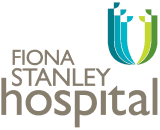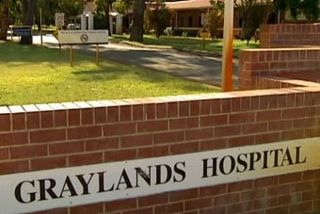
Fiona Juliet Stanley is an Australian epidemiologist noted for her public health work, her research into child and maternal health as well as birth disorders such as cerebral palsy. Stanley is the patron of the Telethon Kids Institute and a distinguished professorial fellow in the School of Paediatrics and Child Health at the University of Western Australia. From 1990 to December 2011 she was the founding director of Telethon Kids.

Subiaco is an inner-western suburb of Perth, the capital of Western Australia. It is approximately 3 kilometres (1.9 mi) west of Perth's central business district, in the City of Subiaco local government area. Historically a working-class suburb containing a mixture of industrial and commercial land uses, since the 1990s the area has been one of Australia's most celebrated urban redevelopment projects. It remains a predominantly low-rise, urban village neighbourhood centred around Subiaco train station and Rokeby Road.

Shenton College is a public co-educational partially selective high school, located in Shenton Park, a suburb of Perth, Western Australia.

Westmead Hospital is a major tertiary hospital in Sydney, Australia. Opened on 10 November 1978, the 975-bed hospital forms part of the Western Sydney Local Health District, and is a teaching hospital of Sydney Medical School at the University of Sydney.
The Telethon Kids Institute is an Australian medical research institute focused on the prevention of paediatric disease and the development of improved treatments to improve the health and wellbeing of children. Telethon Kids has developed a particular focus on Aboriginal health and has more than 500 staff, post-graduate students and visiting scholars. Telethon Kids is located in the Perth suburb of Nedlands, in the Perth Children's Hospital building. Telethon Kids is an independent not-for-profit, non-government organisation with close affiliations with the University of Western Australia and the Perth Children's Hospital. It is named after the Channel Seven Perth Telethon.

The Royal Melbourne Hospital (RMH), located in Parkville, Victoria, an inner suburb of Melbourne, is one of Australia's leading public hospitals. It is a major teaching hospital for tertiary health care with a reputation in clinical research. The hospital is managed as part of Melbourne Health which comprises the Royal Melbourne Hospital, North West Dialysis Service and North Western Mental Health. The Melbourne Health Chief Executive is Christine Kilpatrick AO.

Sir Charles Gairdner Hospital (SCGH) is a teaching hospital in Nedlands, Western Australia.

Fremantle Hospital is an Australian public hospital situated on South Terrace in central Fremantle, southwest of Perth, Western Australia.
Shenton Park is a suburb of Perth, Western Australia, located within the City of Nedlands and City of Subiaco and 4 km (2.5 mi) west of the central business district. Its postcode is 6008. The suburb is named after the park that it contains, Shenton Park, which was named after George Shenton who originally owned the land that is now the suburb of Shenton Park.
Dr. Neale Fong is a business leader, Churches of Christ chaplain, and former Australian rules football administrator and public servant in Perth, Western Australia. As of 2020, he is Chief Executive Officer and Executive Director of Bethesda Health Care, Chair of the Western Australian Country Health Service Board, Managing Director of his own consulting company and Director of a number of health companies. He is the owner of his management consulting company, Australias Health Advisory with a long track record in engagements with state, territory and commonwealth governments, private and not-for-profit health companies.

Fiona Stanley Hospital (FSH) is a state government hospital and teaching facility in Murdoch, Western Australia. Completed in December 2013, the hospital is the largest building project ever undertaken for the Government of Western Australia. It is immediately adjacent to the private non-profit St John of God Murdoch Hospital, with the distance between the entrances to the emergency departments of these two hospitals being approximately 390 metres (430 yd).

St John of God Murdoch Hospital is a 511-bed private non-profit hospital located in the southern suburbs of Perth in Western Australia, immediately adjacent to the public Fiona Stanley Hospital campus. The distance between the entrances to the emergency departments of these two hospitals is approximately 390 m (427 yd).

Fiona Melanie Wood is an English-born Australian plastic surgeon working in Perth, Western Australia. She is the director of the Royal Perth Hospital burns unit and the Western Australia Burns Service. In addition, Wood is also a clinical professor with the School of Paediatrics and Child Health at the University of Western Australia and director of the McComb Research Foundation.

Swanbourne Hospital is a heritage listed former mental hospital located in Mount Claremont, Western Australia. Built in 1904, it was the largest stand-alone psychiatric hospital in Western Australia for much of the twentieth century until its closure in September 1972. The hospital was originally known as Claremont Hospital for the Insane, Claremont Mental Hospital and Claremont Hospital. Following the closure of Claremont Hospital in 1972, the original 1904 section of the hospital functioned as the Swanbourne Hospital until 1985. The site was vacant from 1986, until renovated and reopened primarily as an aged care residence in 2018.

Graylands Hospital is Western Australia's largest mental health inpatient facility, and the only public stand-alone psychiatric teaching hospital. It is located on a 10-hectare (25-acre) site in Mount Claremont, in a suburb formerly known as Graylands, after which the hospital was named. The hospital has 178 beds, including 30 beds in the Frankland Centre, and 320 nurses on staff.
Whitby Falls Hospital is a former hospital for the mentally ill located in Mundijong, Western Australia. Until its closure in 2006 it was the longest operating facility in Western Australia for the care and treatment of mental illness.

The University of Western Australia Medical School is the medical school of The University of Western Australia, located in Perth, Australia. Established in 1957, it is the oldest medical school in Western Australia, with over 6000 alumni. Well-known for its research and clinical teaching, the medical school is ranked 8th in the world and 1st in Australia by the 2019 Academic Ranking of World Universities in clinical medicine. The medical school is affiliated with various teaching hospitals in Perth such as Royal Perth Hospital and Sir Charles Gairdner Hospital. The medical school is also heavily affiliated with the Queen Elizabeth II Medical Centre and its various research institutes. The school has prominent researchers and clinicians amongst its faculty and alumni, including Nobel Prize laureates Barry Marshall and Robin Warren ; recipients of the Australian of the Year award Fiona Stanley and Fiona Wood; and cancer researcher Richard Pestell. The school has produced 11 Rhodes Scholars.

John Allan "Johno" Johnston MBE was a Scottish-born Australian physiotherapist who played a significant role in the early period of the Australian Paralympic movement.
















